Behind the scenes of the Run Everyone challenge
As Power2Inspire’s copy writer/storyteller/content creator, I’m currently spending a lot of time at my desk. My desk, whilst in my room (downside) and underneath my mum’s office (very loud) and above my dad’s office (also very loud), has one big benefit: I have a great view. My desk is up against the window, and I look out onto our garden and lots of green fields. It’s lovely, and has been very inspiring and calming over the last 12 months.
My view has been skewered recently by an unusual but amusing sight: Power2Inspire’s own John Willis walking (or waddling) up and down the garden path. He does this twenty times.
I know because I count.
Every day.

He is, of course, doing Power2Inspire’s Run Everyone Challenge, which encourages everyone to walk, run, wheel or, dare I say it, waddle, as far or as little as you wish, over the course of the month of March.
Eight days into the challenge, John’s getting competitive with himself. I’ve noticed (from the particularly good angle I have of the far end of the garden path) a very determined cornering around the garden furniture: it reminds me, strangely, of a very slow horse race.

Attention to detail has also ramped up over the last few days. Not content with the original measuring of the garden path to meet his 900 metres a day target – to complete a half marathon over the month! – John’s now had our gardener pace out the path (now 888 or so metres – though he’s still not convinced, and is threatening to measure the gardener’s stride just to be sure).
And of course, Strava. Strava is a great fitness app for measuring your distance when going for a run, a bike ride or a walk. It’s also a great way for everyone doing Run Everyone to track and upload their progress through the challenge. It can become a bit addictive though, trying to track down to the metre (or centimetre) just how far you’ve gone. And for John, this is proving a bit difficult, because Strava doesn’t seem to like John’s walks up and down the garden path. The distances he gets every day are completely different, and the maps of them are hilarious.

This first map is pleasingly random, like a scribble: but very unlike the straight up and down path that John’s walking.

And then we have this: which seems to show John walking a rather different route (though I like the triangulation of this pattern, which seems more original than the round scribble above).
So: what to learn from this? For me, it’s a great excuse to remember Power2Inspire’s number one rule: have fun! There’s a limit to how important accuracy to two decimal places can be.
Also, take inspiration from everywhere: John, marching up and down the garden path (a good reminder for me to get outside and into the fresh air); or even from out of your window, watching your dad’s head bob into and out of view (he really needs a haircut).

Inclusive Sports Series: Golf

“Inclusion is empathy”, golf coach Adrienne Engleman says to me over the phone. “It’s just the patience, the listening, the understanding of people’s needs and how they learn.”
She tells me the story of her inclusive coaching qualification exam, where she was coaching a teenage girl with autism. “Honestly, I thought I’d failed the practical exam. We started the session very well: she was really proactive, but a switch went and she walked off and sat down and didn’t want to participate any more. So I made the decision to go and sit with her and we made daisy chains, would you believe! And towards the end of the session I asked her if she wanted to have another go at the golf and she said yes. We got up and had a wonderful time.
“And the examiner took me to one side at the end of the day and said, ‘that’s what inclusion is about, you know. Everyone else is out there trying to coach and do the technical stuff, but you did what she wanted you to do. And that’s inclusion: you got her to feel comfortable and you got her back into playing sport.’”

Adrienne is a former professional golfer turned full-time coach. As a young woman in golf (she turned pro at 17), she experienced exclusion and discrimination in the male-dominated golf world, which she said “kind of sowed the seed for the rest of my career going forward.” After building up a large coaching academy over several years, she decided that all she wanted to do was focus on coaching.
“I took further qualifications with the Professional Golf Association, including my level three and inclusive coaching qualifications.” This led Adrienne to running a big Junior Academy where she was meeting more and more children with various disabilities, whether sight or hearing loss, learning disabilities, mental health or physical impairments. “I got involved with the Bedfordshire and Cambridgeshire golf development groups and was asked to be their equality, diversity, and inclusion officer. It was a voluntary role but it enabled me to get more involved with schools, SEN schools, BAME groups and other communities. It was a wonderful few years of understanding and being more aware of the importance of inclusion.”

Adrienne is now based at Colmworth Golf Club in Bedfordshire, where she runs a Junior Academy and inclusive golf days alongside a range of golf coaching and tuition. She also travels to various schools, clubs and groups to provide coaching. When I asked her whether she could tell me a bit about what she does in her inclusive coaching, she said “it’s a really difficult question because I don’t overthink it. When I go to a facility, I look at what I’ve got to work with and then just try to adapt it to make it as inclusive as possible.”
Adrienne’s instincts for making golf adaptable and accessible seem built in to how she coaches, but for her, it’s primarily about the environment. “You have to be conscious of the environment around you, and how you can make the environment inclusive for everybody.” This includes peoples’ experience of feeling welcome entering the venue, to having handrails in the carpark, to clear and visible signage.
Coaching is also far more than training someone in techniques. After that coaching exam, Adrienne realised an essential coaching skill. “Instead of being an instructor, I became someone who is there to nurture ability, because everyone has ability.”
There have been some big improvements within the wider sport of golf to make it more inclusive. There are far more women involved in the game, and, Adrienne says, a huge breakthrough has been in encouraging families to play golf together.
Jamie Blair, Diversity and Inclusion lead at England Golf, told me that a key focus of the organisation is to change the image and perception of the game, which is one of the biggest barriers to people trying out the game. They work with golf clubs across the country to create and develop communities, and at the same time, to bring new communities together by introducing them to golf. Key to this is giving clubs and coaches the confidence to make mistakes, take risks, and to try new things.

Golf Access is also trying to encourage more people to try out golf by breaking down barriers such as previous experience or equipment. Simon Wood, the company’s director, said that the charity partners with clubs to provide ‘park run’-like events, where people are encouraged to come along and try out golf without needing any equipment or previous knowledge. “It’s really to try and change the perception for new people coming into golf that golf is a great game for everyone.”
But there is still a long way to go for golf. Adrienne said that for a long time, golf has taken a backseat in the sporting world; and many people are still scared and nervous about trying inclusive sports and coaching.
“I think people have been very scared in the past. And I can admit that I was like a rabbit in the headlights when I started this journey. I was very concerned about doing and saying the wrong things. But at the end of the day, I think we’re all learning to embrace and enjoy our diverse environment, our diverse world. Diversity doesn’t exist without inclusion.”
Inspired? Then Get Involved!
If you would like to support us in our mission to “embed inclusive sport in the sporting, education and community landscapes” then we would love to hear from you. We are always looking out for people willing to fundraise for Power2Inspire through their own inspiring means. Or, you could volunteer at one of our events, or you could give to the ongoing work of Power2Inspire. Click the button here to find out more.

Inclusive Sports Series: Tennis

Power2Inspire is excited to launch a new series, where we talk to people working in inclusive sport across the country.
Our first interview is with Danny Sapsford and Mark Bullock, who are both doing amazing work promoting and enabling inclusive tennis and other sports. They have recently filmed a video with eight sportspeople (including our own John Willis) all taking part in an inclusive tennis session: possibly the largest ever recorded to take place!
Danny is a former tennis professional who now runs Bright Ideas for Tennis, a charity encouraging more people to play tennis. Mark is a coach, tutor, mentor, and inclusive sports advisor to a range of organisations, including Middlesex Tennis LTA, Wheelpower, and Panathlon.
Anna Willis sat down with them both (they’re good friends) at the beginning of February to find out more about what they do, and why inclusive sport is so important.

Anna Willis: Hi Mark and Danny! Thank you for taking the time to chat to me today. First question: what are your backgrounds in inclusive sport? What exactly do you both do?

Danny Sapsford: As part of Bright Ideas for Tennis, we have a programme called ‘I Play 30’, which is basically getting as many SEN or multiple disability individuals just playing tennis free of charge. We provide equipment and training for club coaches and volunteers, and most importantly, we create links between tennis clubs and support groups or SEN schools. More broadly, we’re just encouraging more people to play tennis by taking away the barriers and stigmas that go with disability sports.

Mark Bullock: My whole business is around disability inclusive sports: probably 60 to 70% of it in tennis because that’s my background, but not exclusively. I work with loads of different agencies, including Panathlon, Middlesex Tennis LTA, Wheelpower, Metro-Blind sports, and, of course, Bright Ideas for Tennis!
My main aim is to influence other people, so while I do some direct coaching, I’m mainly trying to give other people the confidence to coach, particularly in inclusive sports.

Why do you do what you do? What are you trying to achieve?

By playing sport together, it integrates communities. Sport can be powerful from that point of view. Everyone just becomes much more accepting, and everyone’s benefiting. Currently we’re trying to widen our net and broaden our range and just open out to as many people as we can.
The last 12 months have been hard for everybody. I almost sense that it’s making the general public a little bit more sympathetic and compassionate. I think people do want to do good for the community now: they want to help out because they know people are less well off than themselves. I’m finding it a little bit easier to encourage and approach people because I think they’re a little bit more open to doing some good stuff.
Everyone has disability sport in the back of their mind, they just need a bit of a nudge, a bit of reassurance, and to be shown that it’s possible. Many tennis coaches are quite unconfident in coaching inclusive sessions, and that’s where Mark comes in: he’s a reassuring figure, our disability guru!

Haha, yes! I think there’s a lot of fear around thinking “oh, I’ve not done that before”, and it becomes a no. A coach should actually be able to say, “come and play, and we’ll make it work, we’ll think of something!”

What’s the process for putting on sessions with clubs for ‘I Play 30’, how does it work?

We built up some pretty good relationships with clubs already – I’ve been running the charity for about 7 years and we’ve visited somewhere in the region of about 350 venues in the UK. I choose the clubs that would be most suitable and the individuals that I think would be the most suited to working within disability tennis, and I approach them directly and ask them. In all honesty I’ve don’t think I’ve had anyone turn around and say no, I’m not interested.


What sort of impact are you finding inclusive sports to have?

Everyone I’ve approached, everyone that’s taken part everyone that’s hosting sessions have all categorically said it’s the best and most rewarding thing they’ve ever done!

I did a talk to Middlesex Tennis LTA last week and had 27 coaches attend, which was fantastic. A year ago, I’d have been running around the room in excitement.
I’ve been doing lots of coaching online, all for and to disabled people. I’ve now started an online course on how to deliver online, and I’m getting all sorts of interest about it, mainly from mainstream sports coaches. By default, it’ll be a bit inclusive, as that’s what my experience is in. Therefore, we might be able to reach coaches who wouldn’t come otherwise: we’re leading the way towards inclusive coaching.


What you reckon the future of inclusive sport is, where would you like it to be, and what we need to do to get there?

I talk about the inclusion spectrum: from non-disabled and disabled people doing stuff together to people doing stuff with a similar impairment. And we need to offer more choice so people can pick and choose. I think it’s going to keep evolving.
For example, the Paralympic movement. I hope it does get a higher profile and continue to grow, but also the recognition that it’s only a small segment of what inclusive sport looks like. It’s not inclusive in a sense because it’s only disabled people, and there are also lots of sports that aren’t in the Paralympic Games that could be.
I’m passionate about the more complex end of the inclusive spectrum: people with profound and multiple learning disabilities, people with more than one impairment, which is the case for 75% of disabled people. But the way sport is currently organised is very single impairments based.
So we need to have more on offer, and more opportunities in mainstream clubs. The coaching workforce needs to not turn anyone away, either consciously or unconsciously.

A compulsory disability element to coaching qualifications would hopefully take away coaches’ potential nerves and doubts because they would have already done inclusive coaching within their qualifications. It would then be much more natural to just incorporate inclusive training alongside and within regular coaching.
Every club has a welfare officer. Why not make it a welfare and inclusion officer, who has the responsibility of linking up with local special needs schools, support groups or disability groups and encouraging them to the tennis club to play? The LTA could make this a requirement and it would just happen.

Inclusion should be on the agenda of every meeting in every sports club in the country. Then at least everyone has to think about it. Clubs might not think they’ll have anything to discuss, but they will! Safeguarding is now compulsory on the agenda: it should be the same with inclusion.
So it’s the policy, the rules and regs: all those things need to be in place. And I think there should be a compulsory module around inclusion as part of coaching qualifications. It’s not rocket science, and it’s not disability inclusion: it’s just inclusion.

Could you tell me more about the video?

One of my passions has always been to demonstrate inclusion in its widest sense. It’s not just a wheelchair session, it’s not just a wheelchair player playing with someone non-disabled. It’s as we try to show in the video: people with seven or eight different impairments all playing together. It’s been one of the most exciting projects I’ve been involved in, and a personal challenge.
For example, when I was doing the warm-up, we were doing racket skills. Danny noticed that when we asked John to balance the ball on his racket, he couldn’t get his racquet to turn the other way up. But we found a solution. That’s the challenge.

What do you hope the video will do and mean when people start seeing it?

We’re sending out little clips on Twitter, and it’s already making people both outside and inside inclusive sports think a little bit differently. It’s also starting to influence others, to get people thinking. For example, clips of Joe Salisbury warming up next to Rachel Morgan, who’s totally blind, will really resonate.
It’s also a brilliant opportunity for people to start asking questions: how can you do this? How do you coach deaf and blind players in the same session? You just have to be visual and very descriptive, you just do both at the same time!
You might get something wrong. But you build up that confidence. I still get things wrong. Like with John – I hadn’t quite thought of that problem, but you’ve got to build the confidence for the solution to happen.

Any last advice or words of wisdom?

I’m talking about “possibility” at a virtual conference coming up, and it really got me thinking about using that word to promote the work that we do. Because anyone can play tennis: everything is possible.
Inspired? Then Get Involved!
If you would like to support us in our mission to “embed inclusive sport in the sporting, education and community landscapes” then we would love to hear from you. We are always looking out for people willing to fundraise for Power2Inspire through their own inspiring means. Or, you could volunteer at one of our events, or you could give to the ongoing work of Power2Inspire. Click the button here to find out more.

Putting the fun in fundraising!

On New Year’s Eve, we received a surprise email from Theresa at Cambridge Lawn Tennis Club, saying that the club had raised £250 for us!
The members, led by Theresa, had organised an international tennis tournament, as Cambridge LTC was home to such a wide range of nationalities. The first festival was to be between Italy and Great Britain. Each participating country paid an entry fee, and the winning team would choose the charity the money would be donated to; the GB team chose us, which was fantastic of them.

Unfortunately, the tournament has had to be postponed until the summer of 2021, but Theresa and the GB team were keen to donate something to us anyway. They kindly donated £250 that had been raised from previous tournaments played during 2020.
We’re really grateful to Theresa and the whole of the Cambridge Lawn Tennis Club for their generosity and creativity in raising money for us. Fundraising is essential in helping us do the work we do.
1. The Tournament Fundraiser
As demonstrated by Cambridge Lawn Tennis Club. Your tournament can be whatever you’d like, from a round robin tennis series to challenging the departments at your workplace to a football tournament. By charging a small fee for entry, you can raise money for charity while having great fun with your teammates.

2. Doing a sponsored activity or challenge
This could be like the Run Everyone event that Cambridge Half Marathon and Power2Inspire are putting on together in March, where we’ll do the half-marathon distance spread out over 31 days: 700 meters a day. At its most basic though, you could do anything that will challenge you, and ask your family and friends to sponsor you to do it. It could be a sponsored walk, run, wheel, or cycle ride (or something else – get creative!)
4. Host a sporting sweepstakes
Choose a sports event, from the Premier League to the Tokyo Olympics (fingers crossed!) Everyone pays a small entry fee to place their bets on who will win. You could encourage family, friends, and colleagues to join you, or just to make a donation. Watch the tournament or match or whatever you’ve decided to bet on, maybe all together, or live streamed and have a party! The winner could get a prize, and the money raised from entries will be donated to charity.

5. Participate in a local sporting event
We’ve already mentioned Run Everyone in March, but we’re also partnering with the Cambridge Half Marathon itself, which will go ahead in October. If you’re a budding runner, why not push yourself and start training now? If you want to enter and fundraise for us, get in touch: we might be able to secure you a place. Click the image to find out more…
6. Learn something new
This could be anything from playing the piano to watercolouring to yoga. Give yourself a goal and a time limit and work towards it. Ask friends and family to sponsor you for charity at the same time! Youtube is a fantastic resource for learning new skills, as is Skillshare. Share your progress on social media to keep your supporters up to date, and don’t forget to tag us too!

7. Ask your employer to match your fundraising efforts!
This immediately doubles your contribution! But it’s a great way to get your workplace involved with your fundraising efforts, for them to help support you, and to spread the word about Power2Inspire.

Inspired? Then Get Involved!
These are just a few ideas for how to fundraise for us; there are plenty more out there! The more fun and enjoyable for you and your supporters, the better.
If you would like to help us continue inspiring thousands of people with inclusive sport then we would love to hear from you. We are always looking out for people willing to fundraise for Power2Inspire – we have loads of spaces at events you can run in to raise funds for us, or through your own inspiring means.
We’re so grateful to everyone who wants to fundraise for us: most important is Power2Inspire’s number 1 rule: have fun!
Click the button here to get in touch.



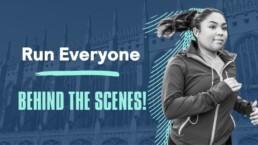




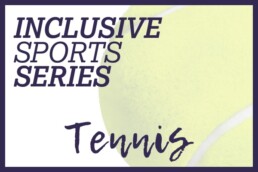
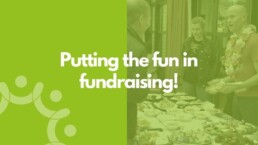

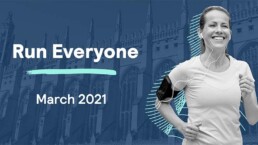
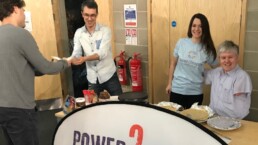

Inclusive Sports Series: Cricket
“I was coaching in a local sports hall with a lad who uses a power wheelchair” Richard Hill, MBE, tells me. “He was a right-sided hemiplegic, could only use his left arm, and had very little vision. And I bounced 200 tennis balls at him during the morning. He hit one of them – and that one ball that he hit was like winning the ashes. He cried; his mum cried. Those moments are just so powerful. It serves a massive purpose: that life changing opportunity that disability cricket has given to people over the years is immense, and so powerful.”
Richard has been working within disability and inclusive cricket for many years, and has been a cricketer himself for many more. He’s now Competitions and Pathways Manager for the England and Wales Cricket Board (ECB) and has brought disability cricket from being minimal within the sport to being world-leading, all within ten or so years. One of the offerings from the ECB is county-level competitions for disabled players, which, when Richard first took over running them, had only nine teams taking part. Now there are forty-four. In the same period, cricket has seen all 39 county cricket boards incorporate disability plans into their offering. The growth in providing accessible cricket over the last decade has been staggering.
Those county competitions are now separated into two tiers, the ‘super nines’ (played nine a side, with a softer ball), and ‘D40s’ (played with a hard ball). “The super nines format is completely flexible”, Richard says, “so that if somebody has a disability where fatigue sets in, and all they can manage to do is come on and bowl a couple of overs, this format gives you the flexibility to roll people on and off.”
Adaptability and flexibility are essential to inclusive cricket. Johan de Silva, Director of Cricket at Highgate Cricket Club, sees cricket as a fantastic game for adaption because it’s so simple. “You can play cricket in a chair with someone batting for them”, Johan suggests. “Or you can use a bigger ball, or a softer ball.”
Inclusive cricket spans a wide variety of adaptions, at all levels of ability and skill. The sport spans everything from England’s international disability cricket teams down to county and club levels, to grassroots and community-based cricket. Richard emphasises that it’s all about getting more people involved and welcomed into the game. “We want to get Jack involved, who sits over in the corner and doesn’t do very much all day, he’s not massively mobile, he might have to use a wheelchair occasionally, he might have limited vision, he might be hemiplegic and only able to use his right arm (which isn’t uncommon). So, in order to get Jack involved in whatever game or exercise, we might need to use a bigger ball, or a ball that’s yellow, or a tennis racquet instead of a heavy bat. It’s those sorts of adaptions that keep it inclusive for me, and that’s what all of our coaches are doing all the time, we’re just swapping and changing.”
At club level, the Champions Club initiative, launched in January, is promising to improve club-level inclusion and support for those with disabilities. The ECB is offering financial support to encourage clubs to create and develop their own disability sections, enabling clubs to buy specific or more adaptable kit, advertise their disability programme online, and hire experienced coaches.
Edgar Herridge, National Disability Cricket Manager with the ECB told me that they’ve been blown away by the responses they’ve already had from clubs: within a month of opening applications, they’ve received more than sixty clubs come forward, demonstrating the appetite and enthusiasm for widening club participation going forwards.
“For me, supporting our cricket clubs to be more inclusive, and to build their confidence around welcoming disabled people in, is really breaking down one of those last bastions of inclusion”, Edgar says. “Once you start speaking to people and understanding that we’re all just the same, that breaks down the biggest barrier.”
Cricket can be a catalyst for change, Edgar believes. In answer to what inclusive sport means to him, Edgar replied: “it’s just making sure that everyone has equal opportunities to engage in our sport. It’s truly making sure that anyone, from any walk of life, whether they have a disability or not, is able to access cricket at their local cricket club. It’s about providing the opportunity to become a coach if they want to, or a scorer, or to be able to walk through the gates of Lords and play there.”
For Johan, it’s about bringing the widest possible opinions and experiences to the game. “The difficult thing is probably starting it off, because it can seem like a daunting task, but I think that once you’ve got it, it’s much easier to trickle outwards.”
Richard’s answer surprised me and made me think deeply about the meaning of inclusivity. He calls it ‘inclusion by exclusion’, and it’s is perfectly demonstrated through the game of blind cricket. The ball has a sound (like a baby’s rattle) which blind cricketers use to judge where the ball is as they bat. However, this wouldn’t suit people with learning difficulties, or those who are highly sensitive to, or distracted by sounds. Therefore, this version of the game works best exclusively for those who are visually impaired. But, it’s importantly providing an inclusive option for them to play cricket.
As Richard says, “it may look, from the outside, as though you’re excluding people, but if you want people to take part in sport, you have to provide the right environment and ingredients for that group or person. All you’re doing is giving everybody an equal opportunity to have the best experience possible.”
It’s all about providing opportunities for everyone to play cricket. Richard, who is a part-time wheelchair user, remembers the first time he went to a disability cricket session. “It was a real step-change in my whole life. I went along to see this cricket and I had a smile like the Cheshire Cat all day long. I spoke to lots of people there and not once did anyone ask me what my disability was, and I never asked anyone else, because actually, I wasn’t interested. All everyone was interested in was playing cricket. And it was quite amazing.”
Inspired? Then Get Involved!
If you would like to support us in our mission to “embed inclusive sport in the sporting, education and community landscapes” then we would love to hear from you. We are always looking out for people willing to fundraise for Power2Inspire through their own inspiring means. Or, you could volunteer at one of our events, or you could give to the ongoing work of Power2Inspire. Click the button here to find out more.
Anna Willis
Freelance journalist and story teller; on Twitter @annawillis101